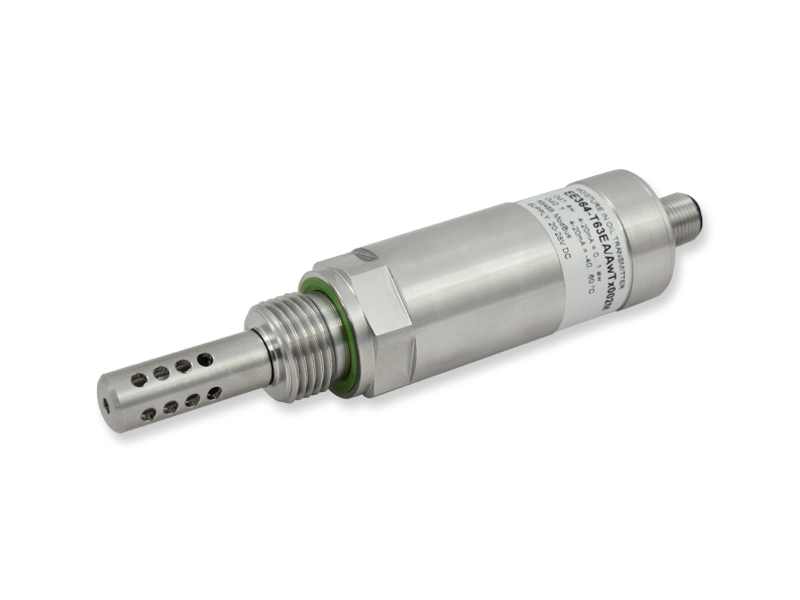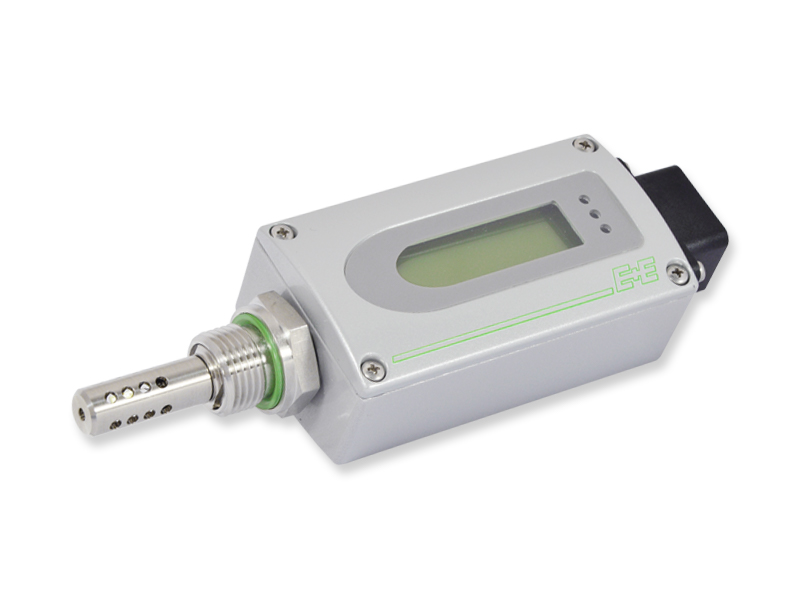Compact Moisture in Oil Transmitter

EE364
EE364 is a compact and rugged moisture in oil transmitter for inline oil monitoring. It is optimised for high accuracy and excellent long term stability in lubrication, hydraulic and insulation oils, as well as diesel fuel.
Water activity (aw) and temperature (T) are accurately measured and the water content (x) in ppm precisely calculated. EE364 features two 4-20 mA outputs and one Modbus RTU interface.
With an optional confugration cable it is possible to perform an adjustment, set the MODBUS interface parameters and configure the analogue outputs.
Typical applications
- Monitoring of
- Transformer oil
- Lubrication oil
- Hydraulic oil
- Diesel fuel
Key Features
- Measurands: water activity (aw), temperature (T) and water content (x) in ppm
- Oil temperature up to 100 °C (212 °F)
- Two 4...20 mA outputs
- Modbus RTU interface
- Pressure rating 20 bar
- G ½" ISO or ½" NPT process connection
- Outputs freely configurable by the user
Technical data
- Measuring range
- 0...1 aw
-40...100 °C (-40...212 °F) - Accuracy
- ±0.02 aw
±0.2 °C (0.36 °F)
- Ouputs
- 2 x 4-20 mA / MODBUS RTU
- Supply
- 10-28 V DC
Related products
Downloads EE364
FAQ
The main difference is the hardware interface. The Modbus RTU protocol runs on RS485 Hardware while Modbus TCP/IP protocol runs on Ethernet hardware.
Calibration for a specific oil is a laboratory procedure for determining the saturation curve of the oil. The saturation curve is described by two parameters (A and B). These parameters are used for setting up the moisture in oil sensor for correct calculation of the water content (ppm) out of the measured temperature and water activity (aw).
Sensor replacement is possible for the EE360 models with the ordering code including PC4 (pluggable probe). Please see the operation manual for detail and spare part code ordering guide.
Please see the cleaning instructions.
No, coating is not available for the E+E MIO sensors.
The standard scope of supply of E+E MIO sensors includes an inspection certificate according DIN EN 10204 - 3.1. For details on calibration certificates please see our white paper "Calibration and Traceability in Measuring Technology".
No, mineral transformer oils from different manufacturers are quite similar. A and B parameters are the same.
Transmitter with "two-wire" technology receive the power from the process, and the signal is carried on return wire (closed current loop). With "three-wires" technology the power supply is separate from current output: 2 wires are the power supply and the third carries the signal.



